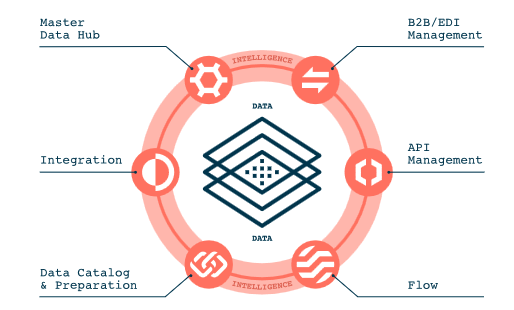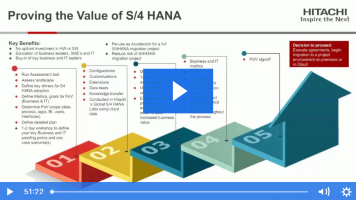Cloud Powers Q3 Success for SAP
SAP Raises Revenue Expectations for the Full Year
by Robert Holland, VP and Research Director, SAPinsider
CEO Christian Klein started SAP’s 2021 third quarter earnings call by saying that “Q3 has been an outstanding quarter”. Highlighted in his opening remarks was the fact that record new cloud business led to an overall growth of SAP’s current cloud backlog by 22%, which exceeded €8 billion for the first time. While Klein cited RISE with SAP as a strong contributor to this growth, the highest third quarter growth in six years for the company, there were contributions from all parts of the organization.
Across the third quarter, SAP signed more than 13,000 net new customers, recorded more than 8,000 go-lives, and saw an increase of over 500 SAP S/4HANA customers. This drove total SAP S/4HANA adoption to more than 17,500 of which over 11,400 are live. This included more than 300 customers signing deals for RISE with SAP. Adding this figure to the numbers that SAP reported from the first and second quarters, there are now approximately 650 customers who have signed on to the offering, and CFO Luka Mucic said that this gives SAP hope that they will exceed 1000 RISE customers by the end of 2021.
Explore related questions
Cloud Revenue is the Key
While operating profit remained relatively flat, something that SAP planned for as they shift to a more predictable revenue model and invest in a converged cloud infrastructure, cloud revenue, total revenue, and cloud & software revenue all increased in the third quarter. Overall cloud revenue increased 20% to €2,386 million, while total revenue was up 5% to €6,845 million. While SAP does not explicitly define cloud revenue, major contributors to it are SAP Concur, SAP SuccessFactors, SAP Ariba, Qualtrics, the SAP Business Technology Platform, and SAP HANA Enterprise Cloud.
Cloud revenue grew globally, with double digit growth in each of SAP’s reporting regions. While EMEA saw 29% growth to €850 million and APJ saw 23% growth to €308 million, Mucic was still pleased with the 14% growth in the Americas to €1,228 million since the US particularly is a much more mature cloud market. Americas cloud revenue was also impacted by the fact that regional growth was hampered because Concur has been particularly negatively impacted by the pandemic and is only now starting to recover. Even though Mucic stated that Concur had a strong order entry performance this quarter, it was the only item in SAP’s portfolio that saw a drop in cloud backlog.
Of the total current cloud backlog of €8,171 million, the SAP S/4HANA current cloud backlog increased by 58% to €1,283 million and SAP S/4HANA Cloud revenue increased by 46% to €276 million. Overall software license revenue continued to decrease, by 1% when compared to the same quarter last year, to €3,524 million. SAP expects this trend to continue as organizations switch to cloud-based licensing, with a particularly strong impact expected in the fourth quarter which is traditionally where SAP has seen large software license contracts close.
While cloud revenues were up a modest amount in each region, approximately 3 percentage points, what prompted SAP to raise their full-year outlook is the increase in current cloud backlog and the size of the deals that they are now signing. Scott Russell, who leads SAP’s Customer Success board area, stated during the call that deals in excess of €5 million made up nearly 40% of cloud order entry this quarter. While this is partially reflected in the increase in cloud revenue, it has a much larger impact on current cloud backlog – especially since many of these deals are long term. With these larger cloud deals closing, SAP expects non-IFRS cloud revenue to exceed €9.4 billion for the year, and non-IFRS cloud and software revenue to exceed €23.8 billion.
Net New Customers Drive SAP S/4HANA Adoption
Although SAP S/4HANA adoption increased as reported above, what continues to be notable about the overall adoption is that more than half of the deals closed this quarter were from customers who were net new to SAP. In the second quarter, SAP reported that net new customers made up more than 50% of SAP S/4HANA deals. This quarter that number grew to approximately 60%. While this demonstrates that the solution is resonating with the marketplace, it also suggests that a significant number of SAP’s existing enterprise ERP customers are yet to make a move to SAP S/4HANA even while overall adoption increases.
In talking about the adoption of SAP solutions as they relate to RISE and SAP S/4HANA, Russell said that SAP customers are clear about needing three things. First is a clean digital core that is transformed to help their business navigate. This goes beyond moving workloads to transforming them. Second is a platform that they can innovate and scale from, not just today but on which they can extend and adapt. Third is speed, as they need the ability to transform quickly. Russell said that he sees customers coming to RISE with SAP from a number of different starting points as they look to meet these needs. Some are new to SAP, some are coming from SAP ECC, and some are already running with a hyperscaler but need to perform a transformation beyond just moving their workloads to the cloud.
While these topics play into SAP’s focus on RISE being Business Transformation as a Service, they also illustrate what SAP is looking to achieve with SAP S/4HANA. SAP continues to emphasize that the cloud is required for organizations to achieve transformation. Whether these organizations are small, medium, or large, SAP wants the cloud, SAP S/4HANA, and particularly RISE with SAP to be the basis for that transformation.
To let SAPinsider know your thoughts on RISE with SAP and receive a copy of our report when it publishes in November, take our survey on the topic.
What does this mean for SAPinsiders?
SAP’s success this quarter demonstrates that the market is improving. As organizations adjust to a new way of doing business, they are looking at SAP solutions to be an integral part of how that happens. But what should you plan for as a member of the SAPinsider Community?
- Cloud is the future of your SAP landscape. Even though many core SAP systems continue to run on-premise, the cloud is where SAP is innovating and planning for the future. Cloud revenue now makes up 40% of cloud and software revenue, and SAPinsider research shows that SAP workloads are moving to the cloud. This includes SAP S/4HANA. No matter where you are in your SAP journey, you need to plan for SAP’s future to be entirely cloud focused.
- The SAP Business Technology Platform will be the foundation of that landscape. Although only mentioned a few times during the analyst call, SAP sees the SAP BTP as the foundation for the Intelligent Enterprise and everything you do in the cloud. Ensure that you educate your teams on what is part of the SAP BTP, how it is connected with solutions like RISE, and how you can leverage the integration, analytics, and extensibility functions that it offers for your SAP solutions.
- Prepare your teams so that they are ready to support your cloud initiatives. Running in the cloud can require skills and experience which is different from on-premise environments. While changes may not be as significant when using infrastructure-as-a-service, SAP is pushing platform-as-a-service (SAP HEC) or software-as-a-service solutions. Spend the time to make sure that your teams are ready and able to leverage cloud environments as you move applications to them.








